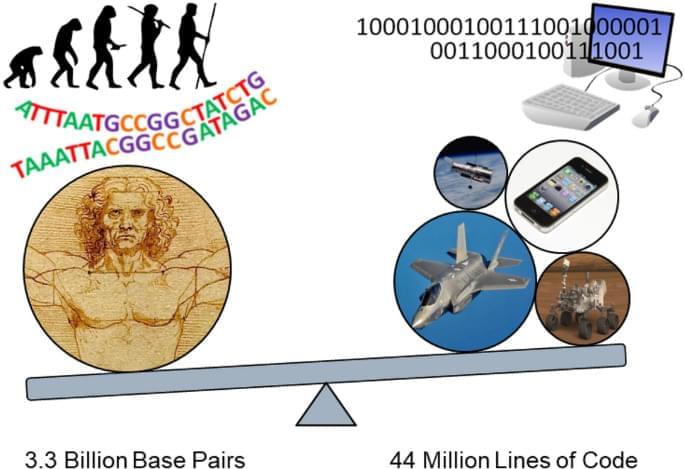The founding members hope the ratified UCIe 1.0 specification will eventually enable users to customise their SoC construction.


Log4Shell is still a threat but it’s mostly being used for crypto mining and knocking out websites.

When knowledge has advanced to a state that includes a predictive understanding of the relationship between genome sequence and organism phenotype it will be possible for future engineers to design and produce synthetic organisms. However, the possibility of synthetic biology does not necessarily guarantee its feasibility, in much the same way that the possibility of a brute force attack fails to ensure the timely breaking of robust encryption. The size and range of natural genomes, from a few million base pairs for bacteria to over 100 billion base pairs for some plants, suggests it is necessary to evaluate the practical limits of designing genomes of similar complexity.


SpaceX CEO Elon Musk is warning users in Ukraine who have received one of the company’s Starlink dishes that the connection could be targeted by Russian state actors.
“Important warning: Starlink is the only non-Russian communications system still working in some parts of Ukraine, so probability of being targeted is high,” Musk tweeted on Thursday.
“Please use with caution,” he added.
A study published in Frontiers in Computational Neuroscience has revealed that the human brain’s structures operate in up to 11 dimensions.
The dimensions are not understood as the classic definition of a dimension, which most of us understand, the Blue Brain Project explains.
Conducted by the Blue Brain Project, scientists discovered fascinating new details about the human brain’s complexity.
A planetary scientist is working on a pulverizing system to destroy asteroids before they hit Earth. Learn more about his technology through this article.

With the war in Ukraine raging and gas and energy prices climbing across world markets, there is one piece of good news for European energy markets.
Economists from Poland’s state Pekao bank are reporting a large reduction on the price of CO2 emission certificates. The prices have fallen dramatically from €95 to €62 per ton. This is especially good for countries like Poland, which are forced to pay a premium for energy derived from “dirty” sources like coal. The fall in the price of this “tax” is expected to make the cost of energy especially more bearable for many of Europe’s poorer nations.
The CEO of Poland’s Development Fund, Paweł Borys, also commented on the issue on Twitter. “It is significant how CO2 prices have collapsed, falling by 30 percent since they peaked in February. This is good news, as it means that electricity prices may fall, thereby reducing inflationary pressure that have been exacerbated by hikes in oil and food prices.”
In a vacuum like space, the speed of light is just over 186,280 miles per second. Scientists have now shown it’s possible to slow it down to zero miles per second without sacrificing its brightness, regardless of its frequency or bandwidth.
A team of researchers from the Israel Institute of Technology and the Institute of Pure and Applied Mathematics in Brazil discovered a method of theoretically bringing the speed of light to a halt by capitalizing on “exceptional points”—coordinates at which two separate light emissions reach each other and merge into a single one, according to Phys.org. A paper describing the research was published in the scientific journal Physical Review Letters.
The first involves aiming a laser into a cloud of ultracold sodium atoms, the researchers wrote in their paper. When the laser is abruptly switched off, a slow pulse of light is imprinted onto the atoms, essentially bringing the light to a halt by absorbing it; the imprinted shape can then be converted back into a photon. But it’s the second method that allowed the researchers to make their breakthrough.

Townscaper is a clever little town-building experience that gained notoriety back when it first launched on Steam Early Access in 2020. Now developer Oskar Stålberg has taken interest in VR design, showing a prototype of the pint-sized town creator running in VR.
Stålberg took to Twitter today to ask some design advice from the VR developer community, offering a glimpse at Townscaper’s quaint little models being plopped down and manipulated in VR.
Looking at basic VR design. Current idea is to use a point on a stick for interaction (rather than a raycast) so that you can build in the air. Those points also serve as grabbig points for grab-navigation. Feels tactile. pic.twitter.com/QvqoJzkn9y